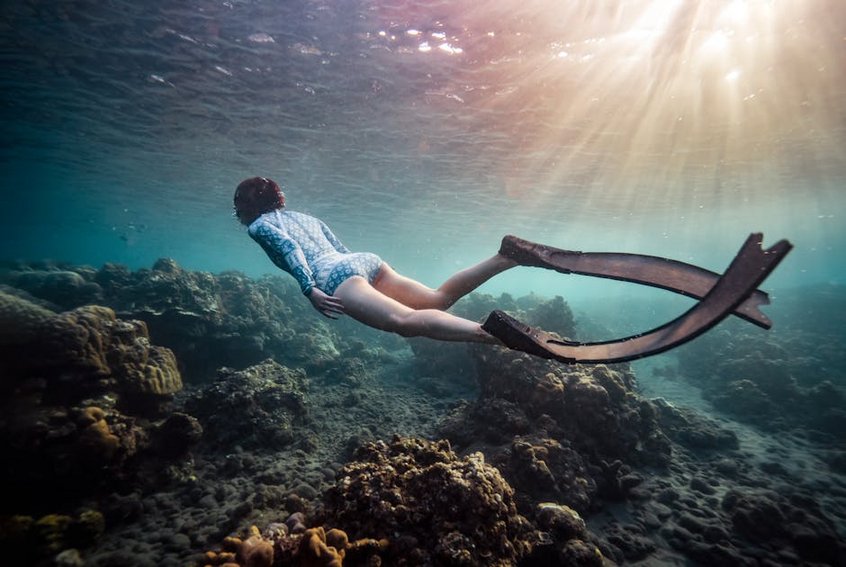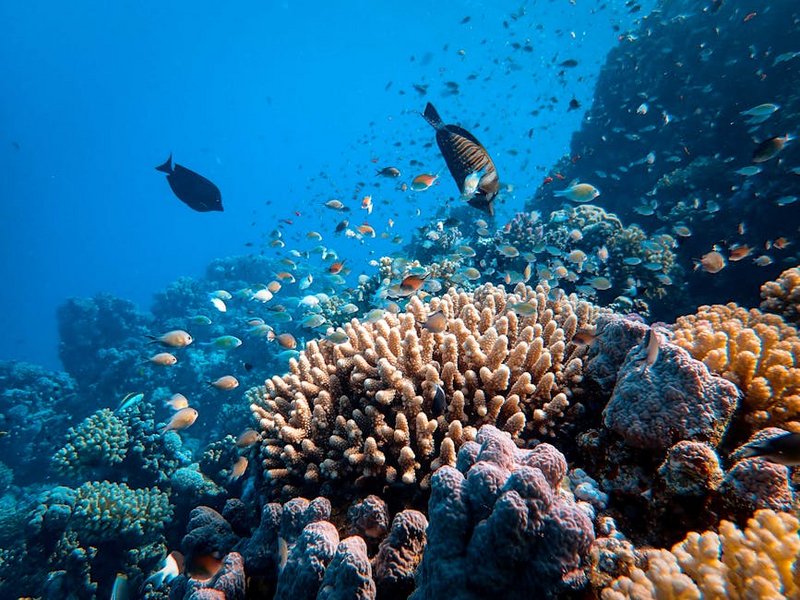Diving and Conservation on Fiji Coral Reefs
Imagine descending into the warm, clear waters of Fiji, where vibrant coral reefs teem with life in every color imaginable. Diving and conservation on Fiji coral reefs offers one of the planet’s most spectacular underwater experiences, combining breathtaking marine biodiversity with meaningful environmental protection efforts. As you glide through these pristine waters, you’ll encounter everything from tiny neon nudibranchs to majestic manta rays, all while participating in conservation initiatives that help preserve this fragile ecosystem. The Fijian people have long understood their sacred connection to the ocean, implementing traditional conservation practices called “tabu” that modern science now confirms as incredibly effective. Whether you’re an experienced diver or just starting your underwater journey, Fiji’s coral reefs provide not just adventure but also an opportunity to contribute directly to marine preservation. The combination of world-class diving conditions, year-round warm waters, and genuine conservation opportunities makes this destination truly unique for environmentally conscious travelers.
Diving and Conservation on Fiji Coral Reefs – Essential Information
Before planning your underwater adventure, understanding the fundamentals of Fiji’s marine ecosystems will significantly enhance your experience. The Fijian archipelago comprises over 330 islands, with the Great Astrolabe Reef, Rainbow Reef, and Great Sea Reef forming some of the most extensive coral systems in the South Pacific. These reefs support approximately 1,200 species of fish and 400 types of coral, creating a biodiversity hotspot that rivals Australia’s Great Barrier Reef. The water temperature remains between 79-84°F (26-29°C) year-round, with visibility often exceeding 100 feet (30 meters) during optimal conditions. What sets Fiji apart is the genuine integration of conservation into the diving experience – many operators are locally owned and actively participate in reef monitoring, coral planting, and marine education programs. The Fijian concept of “vanua” emphasizes the interconnectedness of people, land, and sea, creating a cultural foundation that supports sustainable tourism practices.
Marine Biodiversity – What You Need to Know
- Fiji’s reefs host 40% of the world’s coral species, including rare black corals and giant barrel sponges that can live for centuries
- The soft coral capital of the world features spectacular displays of Dendronephthya and Sarcophyton corals that pulse with color during tidal changes
- Endemic species include the Fiji damselfish, Levu bleeny, and several unique coral species found nowhere else on Earth
- Budget travelers can expect to spend $150-200 per day including hostel accommodation, local meals, and two boat dives with basic equipment rental
- Mid-range options typically cost $300-450 daily featuring resort stays, all meals, unlimited shore diving, three boat dives, and conservation program participation
- Luxury liveaboard experiences range $500-800 per day offering premium accommodation, gourmet meals, unlimited diving, dedicated conservation activities, and premium equipment
- Tourism Fiji Official Site
- Manta Project Fiji Research
- Coral Triangle Initiative Conservation Resources
Conservation Framework – Key Details
Fiji has established an extensive network of marine protected areas (MPAs) covering approximately 30% of its waters, one of the highest percentages globally. The country implemented the Fiji Locally Managed Marine Area (FLMMA) network, which empowers local communities to manage their coastal resources using both traditional knowledge and modern science. Many dive operators partner with organizations like Reef Explorer Fiji and Manta Project Fiji to collect valuable data during dives. When you participate in a conservation dive, you might help monitor coral health, count fish populations, or even assist in coral planting efforts using specially designed frames that encourage new growth. The government requires all dive operators to follow strict environmental guidelines, including no-touch policies, buoyancy control requirements, and limited group sizes to minimize impact on delicate ecosystems.

Diving and Conservation on Fiji Coral Reefs – Planning Your Trip
Strategic planning ensures you experience the best diving conditions while maximizing your conservation impact during your Fijian adventure. The major diving regions include the Mamanuca and Yasawa Islands for accessibility, Vanua Levu for the famous Rainbow Reef, and Kadavu Island for the massive Great Astrolabe Reef. Most international visitors fly into Nadi International Airport (NAN) on the main island of Viti Levu, then take domestic flights, ferries, or speedboats to their chosen diving base. You’ll want to allocate at least 7-10 days for a meaningful diving and conservation experience, allowing time for both boat dives and participation in conservation activities. Many resorts offer package deals that include accommodation, meals, diving, and conservation activities, which often provide better value than booking components separately. Remember that Fiji operates on 240V electricity with Type I outlets (three flat pins in triangular pattern), so bring appropriate adapters for charging your underwater camera equipment.
Best Time to Visit Fiji Coral Reefs
The optimal time for diving and conservation on Fiji coral reefs depends on your priorities for marine life encounters and weather conditions. May through October constitutes the dry season, offering the clearest visibility (often 100+ feet/30+ meters) and most comfortable air temperatures around 75-80°F (24-27°C). This period also brings cooler water temperatures of 75-79°F (24-26°C), which some divers prefer despite needing slightly thicker wetsuits. November through April represents the wet season, with warmer waters (80-84°F/27-29°C) but higher rainfall and potentially reduced visibility. However, this period offers unique opportunities to witness coral spawning events typically occurring after full moons from October to December. For manta ray enthusiasts, the Yasawa Islands see these gentle giants from May to October, while Kadavu Island offers year-round manta encounters with peak season from April to November.
Budget Planning and Costs
Essential Preparation Checklist
Preparing properly for your diving and conservation trip ensures both safety and maximum enjoyment of your Fijian underwater adventure. Ensure your diving certification is current and consider taking specialty courses like underwater naturalist or coral conservation before arrival. Pack reef-safe sunscreen (required at many sites), a rash guard for sun protection, and conservative swimwear respecting local customs when visiting villages. Bring documentation of dive insurance and travel insurance that covers diving emergencies, as hyperbaric chambers are located in Suva and Lautoka. Download marine identification apps like Reef Life or Coral Finder to enhance your ability to identify species during dives. Contact your dive operator in advance to inquire about specific conservation activities available during your visit and whether any special training or preparation is recommended. Finally, pack a reusable water bottle and say no to single-use plastics to align with Fiji’s environmental initiatives.
Diving and Conservation on Fiji Coral Reefs – Top Attractions and Activities
Fiji’s underwater world offers diverse experiences ranging from gentle coral gardens to thrilling shark encounters, all integrated with meaningful conservation opportunities. The Great Astrolabe Reef off Kadavu Island stretches over 100 kilometers, featuring spectacular drop-offs, swim-throughs, and untouched coral formations that host everything from pygmy seahorses to passing pelagic species. The Rainbow Reef between Vanua Levu and Taveuni is famous for its Great White Wall, a breathtaking vertical reef covered in white soft corals that appear to glow during certain current conditions. The Namena Marine Reserve, protected by local communities since 1997, showcases some of Fiji’s healthiest coral ecosystems with astonishing biodiversity including barracuda schools, reef sharks, and frequent manta ray sightings. What makes Fiji exceptional is how these dive sites actively incorporate conservation – you might participate in coral health monitoring at one site and assist in crown-of-thorns starfish removal at another.
Must-See Highlights
Every diver should experience Fiji’s signature sites that showcase the best of marine biodiversity and conservation success stories. The Great White Wall on Rainbow Reef presents a surreal diving experience where you drift along a wall blanketed in white soft corals that resemble a snowy mountainside underwater. Shark Reef Marine Reserve near Pacific Harbour offers guaranteed shark encounters with up to eight species including bull sharks, tiger sharks, and silvertips in a carefully managed environment that demonstrates successful marine protection. The E6 Reef near Bligh Water features untouched hard coral formations that have survived bleaching events, providing important research opportunities for scientists studying coral resilience. Beqa Lagoon’s soft coral gardens explode with color during incoming tides when polyps extend to feed, creating a breathtaking underwater flower garden effect. These sites typically include conservation components where divers help collect data or maintain mooring buoys that prevent anchor damage.
Hidden Gems and Local Favorites
Beyond the famous sites, Fiji offers lesser-known locations where conservation efforts create particularly rewarding experiences. The Waitabu Marine Park near Taveuni represents a community-managed success story where once-depleted fisheries have rebounded dramatically, offering incredible fish density and diversity. The Moon Reef near Tailevu provides a unique opportunity to swim with spinner dolphins in their natural habitat while participating in research on their population dynamics and behavior. The Vatu-i-Ra Passage between Viti Levu and Vanua Levu offers exhilarating drift dives through nutrient-rich waters that attract manta rays, eagle rays, and occasional whale sharks during migration seasons. Many local dive guides know secret spots where coral planting projects have created new reef ecosystems, allowing you to witness conservation in action and sometimes even participate in maintenance dives. These locations often feature fewer visitors and more personalized experiences with researchers and conservationists.
Diving and Conservation on Fiji Coral Reefs – Practical Travel Information
Navigating Fiji’s island geography requires some planning, but the effort rewards you with unparalleled diving and conservation opportunities. International visitors typically arrive at Nadi International Airport (NAN), where many dive operators offer transfer services to marine destinations. Domestic flights on Fiji Link or Northern Air provide access to outer islands, while ferries and speedboats connect the Mamanuca and Yasawa island chains. The Fijian dollar (FJD) is the local currency, though USD are widely accepted at dive resorts and larger establishments. Credit cards work at most dive shops and resorts, but carrying some cash is essential for village visits and smaller operators. English is an official language and widely spoken, particularly in tourism areas. Fiji operates on GMT+12 time zone, and the electrical system uses 240V with Type I outlets. The country has excellent mobile coverage in populated areas, though some remote dive locations may have limited connectivity – perfect for disconnecting and focusing on your underwater experience.
| Category | Options/Features | Price Range (USD) |
|---|---|---|
| Accommodation | Beachfront bure, air conditioning, eco-friendly | $120-400/night |
| Dive Packages | 2 boat dives daily, equipment, guide | $100-180/day |
| Conservation Programs | Coral planting, monitoring, research participation | $50-150/activity |
| Liveaboard Cruises | 7-night itinerary, all inclusive, unlimited diving | $2,500-4,500/week |


